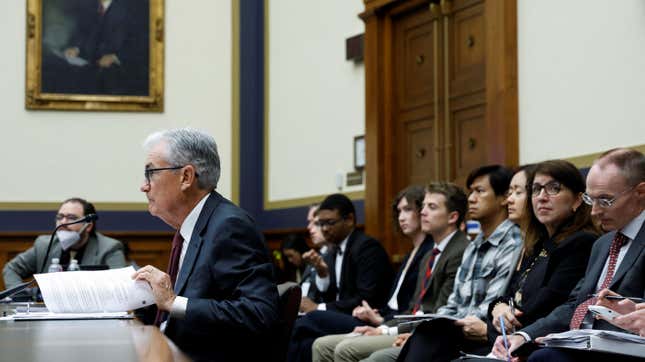
At Federal Reserve chair Jerome Powell’s latest appearance on Capitol Hill, US lawmakers had the opportunity to ask him about what drove the central bank’s choice to put a hold on interest rate hikes. Or they might have probed to better understand its expectations for taming inflation. Instead, members of the House of Representatives wanted to know why the Fed was planning to raise capital requirements at large banks—reportedly by as much as 20%.
The decision to increase the amount of money banks are required to keep on hand would follow a spate of bank failures that rattled investors and invited fresh scrutiny of the Fed’s supervisory powers. But higher capital requirements also come with a downside: Many politicians believe that if banks have to set more money aside, they won’t lend as much, which could slow down the economy.
How do capital requirements affect lending?
Interestingly, many of these same politicians are supportive of the Fed increasing interest rates, a credit-tightening move that would make borrowing more costly almost immediately. Yet, they are trepidatious about raising capital requirements, which would gradually result in reduced lending in the long term.
Powell said the idea behind making banks put more money in reserve is to help them to stay solvent and to keep lending, no matter if the economy is doing well or poorly. When banks fail in hard times, it makes lending even tighter and can lower the country’s overall economic output.
While bad management was a large reason for the recent collapses of Silicon Valley Bank (SVB) and Signature Bank , current capital requirements
also played a role in these banks’ failures, Powell said. The panic that led to the run on the bank at SVB, for example, stemmed from losses on the sale of securities that had gone down in value since the Fed started hiking rates.
Michael Barr, the Fed’s vice chair for supervision, raised the specter of higher capital requirements when he recently shared his plan to speed up the Fed’s supervision process and modify how banks are evaluated for resilience during crises. Instead of just testing how banks would hold up in hypothetical scenarios, Barr proposed a “reverse stress test,” where regulators would attempt to identify what it would take to cause a bank to fail. The central bank’s board would still need to approve these changes before they could be enacted.
So what’s the Fed going to do? We don’t know yet, and that’s what US lawmakers are worried about.
“With capital standards, it’s always a trade off,” Powell said. “More capital means a more stable, more sound, and more resilient banking system. But it also at the margin can mean a little bit less credit availability, and also the price of credit can be affected, and there’s no perfect way to assess that balance.”